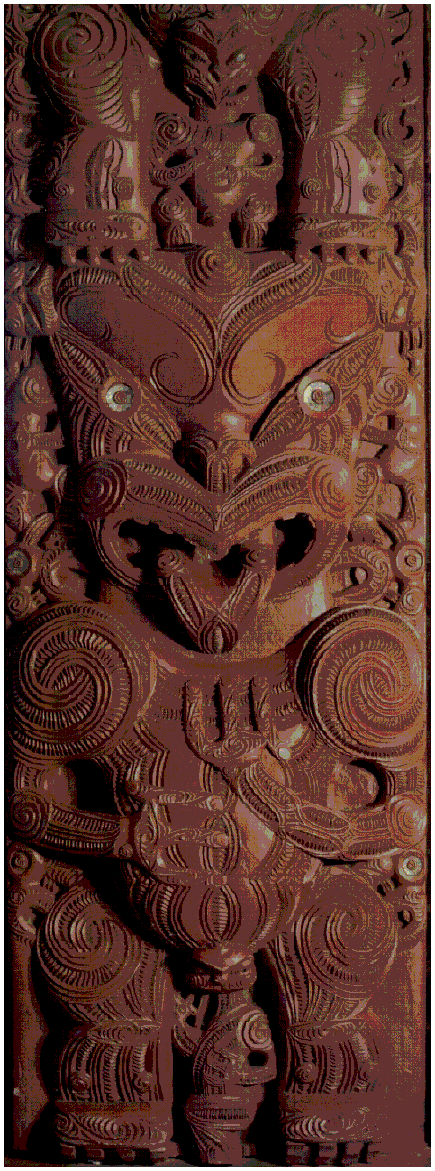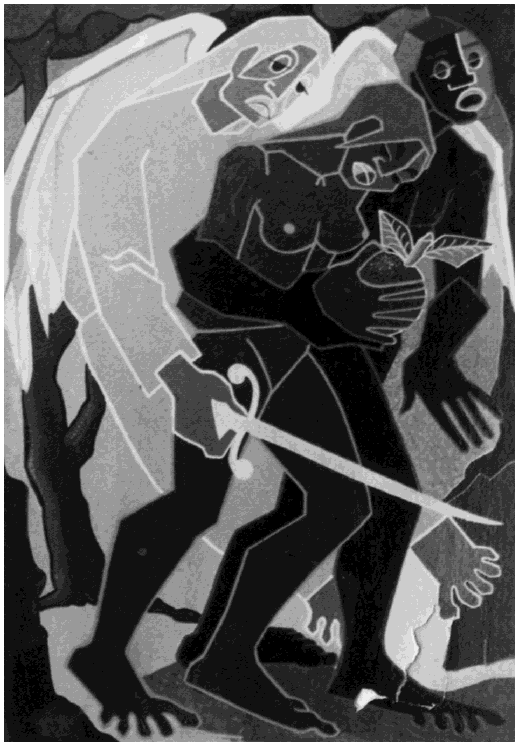
The Carver and
The Artist
Maori Art in
The Twentieth Century
Damian Skinner
(Auckland University Press)
The Artist
Maori Art in
The Twentieth Century
Damian Skinner
(Auckland University Press)
There are over a hundred color plates of contemporary Maori carving. They dazzle. Decorative poles, colorful ceiling supports, upright flat-plane face and forms, boats for fishing (and fighting), enlarged bugs and beesties, heads on heads, patterned murals.
It's so gorgeous that you want to call up Qantas and get over there ASAP for a looksee but its $4400 atop all the credit you have loaded on your Visa and you are already being dinged 19.9% so forget it.
The book would be a winner --- all 211 pages of it --- if it were not so obfuscatory. It started out as Skinner's PhD thesis comparing traditional Maori carving with some of the modern artist offshoots, but I am damned if I can make any sense of the commentary, much less the titles to the pictures ...
...like this whopper under a wide-angle shot of an gorgeously carved room:
-
FIGURE 23. Front inside wall of Te Tiriti o Waitangi Whare Runanga. The whakairo operates as matched pairs reflecting in the pou tahuhu. According to J. M. McEwen, the four epa that flank the pou tathuhu represent Ngati Porou and Te Tai Tokerau carving while the outer two epa relate to Te Arawa carving styles.
Anyway you spell it, meaningless as it is, the book is high art, very high art, and it deserves our love and respect. Figure 41 is a stupendous tongue-hanging-out spirally carved figure with glistening feldspar eyes --- "Apirana Ngata, Te Aroha o te lwi Máori." Somehow the Mormon Church got involved in Apirana Ngata, and they requested that the "whare whakairo not have túpuna inside it, but the carvers disregarded this request and named the whakairo."
Figure 41 is a stupendous tongue-hanging-out spirally carved figure with glistening feldspar eyes --- "Apirana Ngata, Te Aroha o te lwi Máori." Somehow the Mormon Church got involved in Apirana Ngata, and they requested that the "whare whakairo not have túpuna inside it, but the carvers disregarded this request and named the whakairo."
--- Peter Maloney